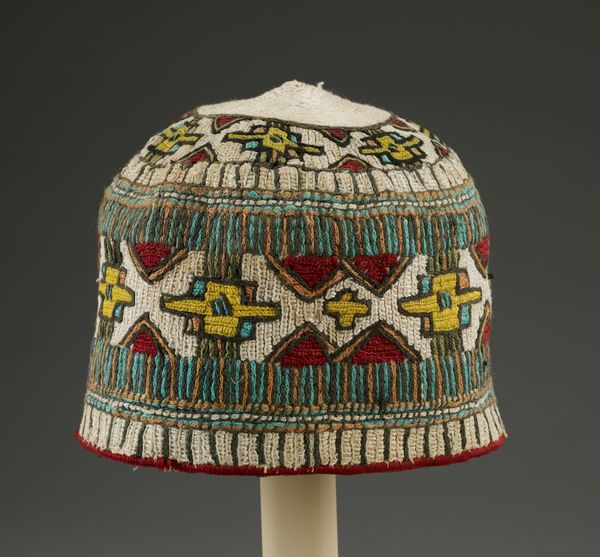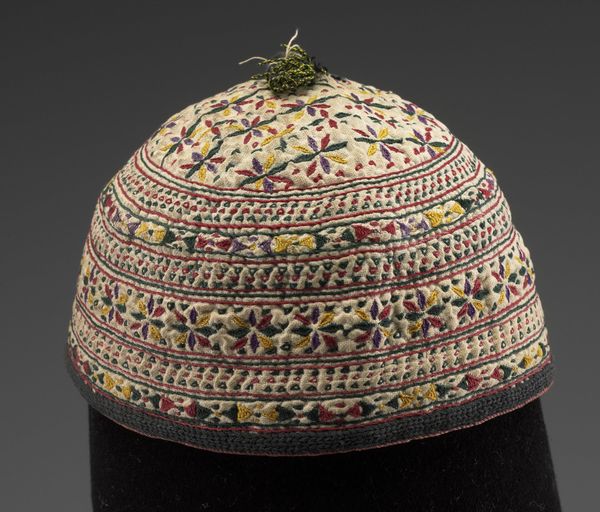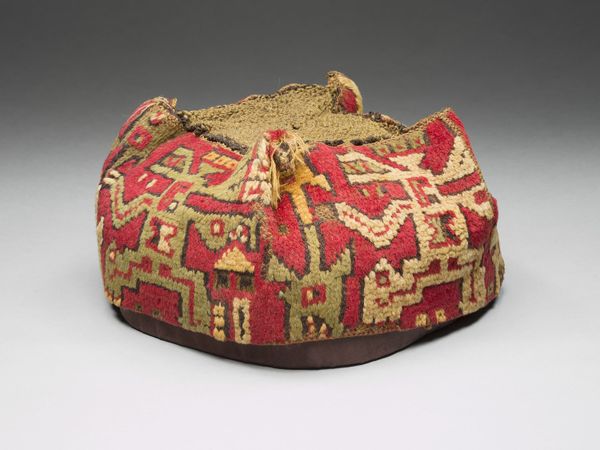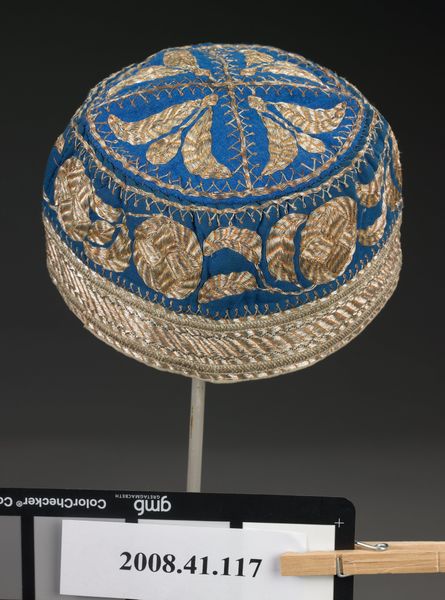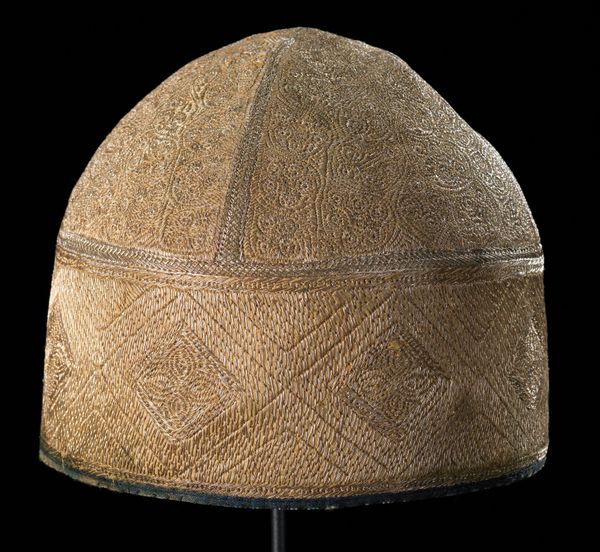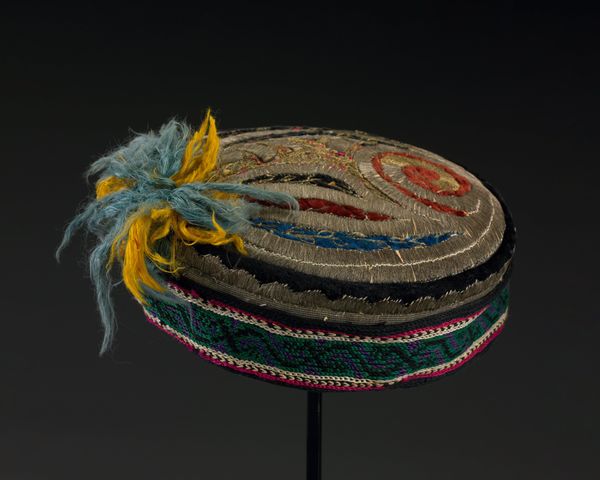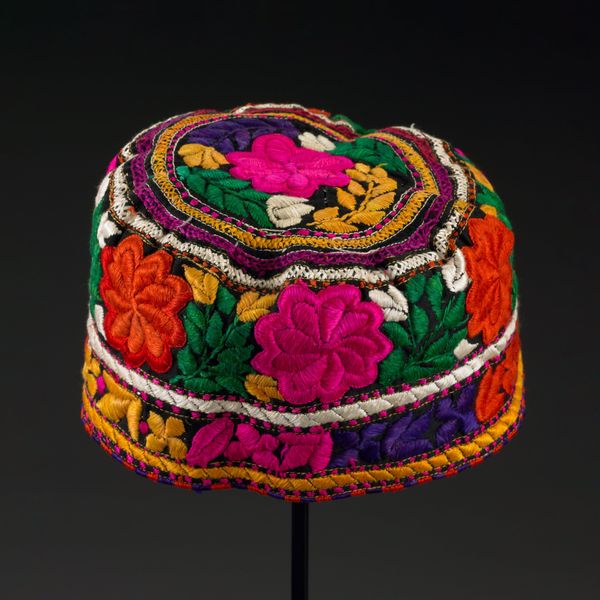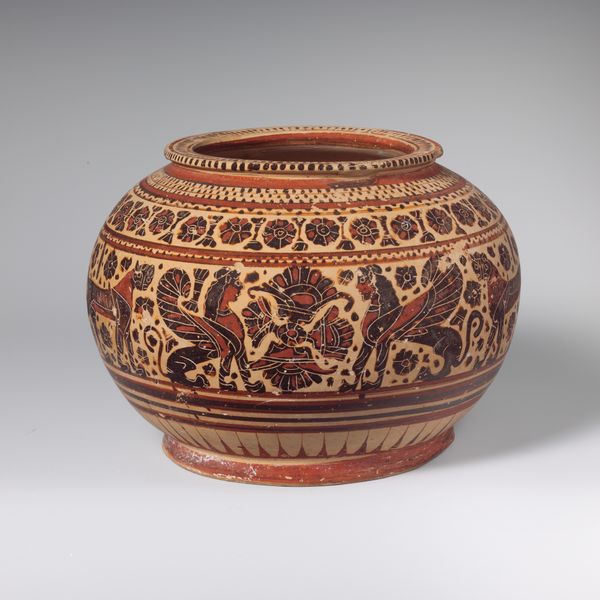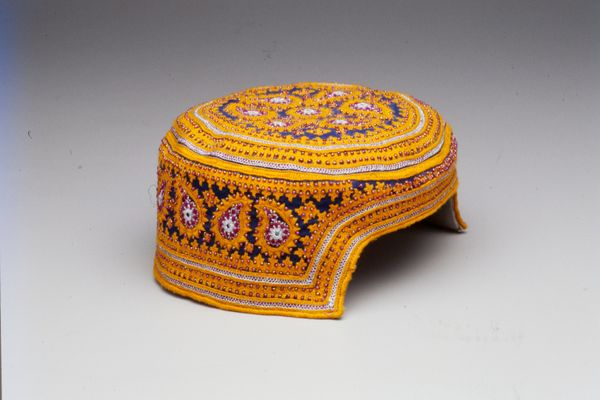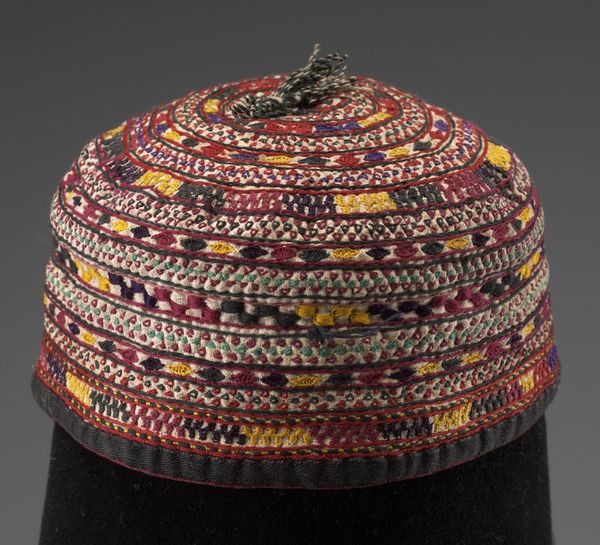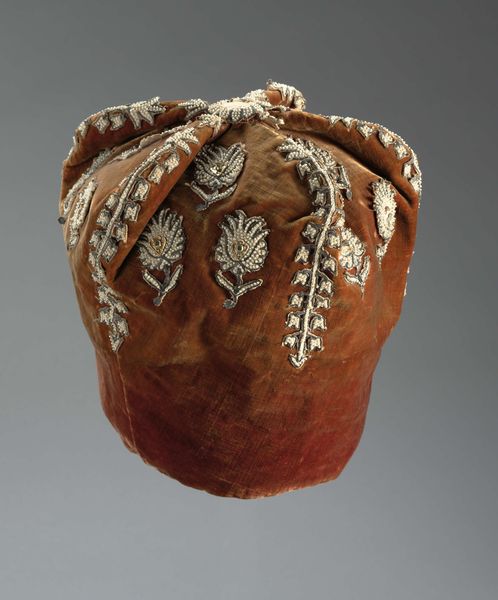
textile, cotton
#
pattern
#
textile
#
cotton
#
islamic-art
#
decorative-art
Dimensions: 4 x 7 x 7 in. (10.16 x 17.78 x 17.78 cm) (approximate)
Copyright: Public Domain
Editor: This gorgeous Hazara hat, likely from sometime between 1900 and 1925, is made of cotton textile. It feels so rich and ornamental! What strikes me most is the dedication to ornamentation and fine details. What stands out to you in this piece? Curator: Indeed, the elaborate embroidery speaks volumes. Think about the hands that crafted this, and the symbols chosen. Do you see how the concentric circles at the base might represent community, a visual echo of the wearer within their social sphere? And what about the swirling motifs, could they signify spiritual journeys or perhaps the turning of time itself? Editor: I hadn’t considered the circles as a representation of community, but that makes perfect sense. I was focused more on the purely decorative aspect. Are those interpretations universally accepted or more open to debate? Curator: Symbolism is rarely monolithic. What’s potent here is understanding the visual language being employed. Red often symbolizes courage and passion in various cultures. The gold, obviously, connotes value and importance. These elements, interwoven, suggest this hat was made for someone of stature, perhaps for ceremonial use. What emotions does the hat evoke in you? Editor: It gives me a sense of reverence and almost a sense of protection. It’s clear this was not just a hat; it served a purpose beyond simple covering. Curator: Exactly. This piece offers a window into Hazara culture, reminding us that clothing transcends mere utility. It’s a canvas upon which identities and beliefs are carefully stitched. Editor: It's amazing how much history and meaning can be embedded in a single object! Curator: Precisely. Every thread, every colour, every carefully placed pattern whispers a story. Examining art like this compels us to listen.
Comments
No comments
Be the first to comment and join the conversation on the ultimate creative platform.

